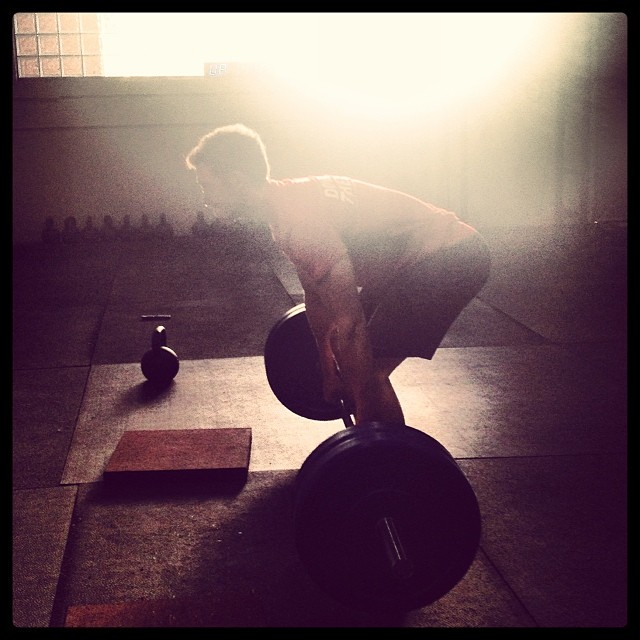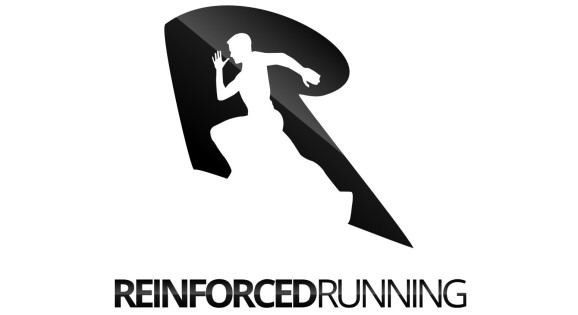Meg is an experienced runner and admittedly does not know how to strength train.
We got to chatting and it was as if he had a deep secret to confess.
“I know I need to use weights to improve my strength.”
“I just don’t know what to do and would rather run.”
As a result, Meg has suffered many injuries.
- IT band syndrome
- Plantar fasciitis
- Achilles tendonitis
In the past, Meg thought her injuries were a mistake in training. She had run too fast and too far too soon. She knows strength training can prevent injury but has never made a plan.
Running is Meg’s safe place. She defaults to running despite needing strength training.
Running is fantastic, and it has many benefits.
- Runner’s high
- Stress relief
- Burning calories
- Incredible sense of accomplishment
But, it can also be destructive. Most athletes will inevitably end up with a running related injury during their career.
Runners can also hit a plateau where they will be spinning their wheels trying to improve.
The answer is learning how to create an effective and efficient strength training program.
Strength Training Benefits and Methods for Runners
Benefits of Strength Training
- More power output for faster running
- Extra muscle fiber recruitment to increase endurance
- Increase muscle for an extra caloric burn.
- Added stability and body control to reduce injuries
Click here for three free strength training workouts! Add them to your current running program.
Increase Your Power Output and Run Faster
It’s simple. More power versus your relative weight will create more speed. The more force you produce against the ground the faster you will run.

Increasing your leg and core strength is a sure fire way to improve your power production. Enabling your glutes, hamstrings, and quads to activate while driving off of the ground will propel your body forward.
Squats, deadlifts, and other compound moves are key to generate more power.
How you can implement squats and deadlifts
- Start with higher reps in the early weeks.
- Each week add weight to your squat.
- Decrease the number of reps and increase your number of sets.
- Every fourth-week use as a “de-load week” or a chance to try for a new one rep max
Squat Progression Example:
Week 1
3 x 8 @ 135 lbs
Week 2
4×6 @ 145 lbs
Week 3
5×5 @ 155 lbs
Week 4
3 x 8 @ 135 lbs
Recruit more muscle and build better endurance.
Do you glutes work?
Are you sure?
Have you checked?
Runners are one-dimensional athletes. They can become reliant on their quads, hip flexors, and calves to get them through a run. The glutes and hamstring become neglected. When you compound this with excessive sitting and lack of mobility work you have a recipe for injury.
Adding simple strength training methods will help you recruit muscles. Once you access and activate your muscle fiber, you can train them for endurance.
The increase in muscles fibers will reduce cramping and increase overall performance.
How you can activate more muscle for endurance training.
Prior to your run take 10 minutes to do a circuit of glute and hamstring specific exercises.
Pre Run Muscle Recruitment Circuit
3 Rounds
- 30 Step Ups
- 15 Single leg RDL
- 30 Clam Shells
Below are Top exercises to Increase muscle recruitment.
- Frog Pump
- Squats and Deadlifts
- Banded Side Step
- Walking Lunge
- Donkey Kicks
- Good Mornings
Build muscle to burn fat
It is easy to judge a workout by the number of burned calories.
In my personal experience, I would fall into a constant cycle of questions.
- How many calories are enough?
- How often should I burn these calories?
- Where do these calories go and will they come back?
I was the classic case of a runner who was “running” from calories and weight gain. I thought “more is better” and I would end up hurt or in worse shape than when I started.

It took me years to learn that running is not a weight loss strategy.
Let me explain:
Your Metabolism wants to keep you working as efficiently as possible. If you are running every day, you are sending a signal to your body that calories will be burned in excess every day.
For your body to best serve you in the times of a crisis, it will begin to slow the metabolism down to conserve the remaining energy.
Your body will operate its bodily function on the limited amount of calories. You are then in conservation mode. Your body will store extra calories because you are consistently stressing the body into thinking there is a limited amount of fuel. This is how you can run every day and gain weight.
Adding muscle will speed the metabolism because it is more costly to maintain muscle. If you are adding muscle, your body will need to expend extra calories to sustain the muscle.
Lifting heavy sends a signal to your body that you need more energy to sustain your muscles regeneration. Your body wants to rebuild and prepare for the next time you have to come across something that is so challenging.
Take away
- Excessive cardio will slow your metabolism down to conserve the limited calories.
- Building muscle will speed up your metabolism.
Create a stable body to avoid running injuries
Running is a prime way to improve health and fitness. Everyone believes that running is their way to a healthy lifestyle.
However, you should not start running without preparation. Running in a deconditioned state increases chance of injury.
Excessive movement will occur without a stable foundation. Extra motion in a repetitive fashion is the number one cause of running injury.
“So are you saying I can’t run because I am out of shape? Then How do I get in shape?”
Strength training is your answer.
Strength training will increase your stability.
Your glutes and core are important stabilizers. Build strength in these areas for confident stride and landing.
A great way to add stability to your workouts is through the use of eccentric moves, single leg exercises, and isometric holds.
Add one exercise from each category two days a week to better prepare for your run.

Eccentric Moves
Eccentric Elevated Split Squats
Eccentric Squats
Single Leg Exercises
One legged RDL
Pistols Squats
Lunges and Step-ups
Isometrics
Plank
Squat Hold
Hollow Hold
Start Strength Training Today! Here’s How.
Have you ever had these thoughts as a runner?
- I don’t want to injure myself.
- I don’t want to be so sore that I cant run.
- I don’t want to feel embarrassed or weak in the weight room.
These are legit concerns!
But don’t worry, follow the steps below to gain confidence and clarity for your strength training plan.
Three Keys to Your New Strength Routine
- Compound movements
- Bodyweight exercises
- Core strength
Click here for three free strength training workouts! Add them to your current running program.
Compound movements
A compound movement is a when you are using multiple muscle groups and joints to complete the exercise.
The squat is a prime example.
- You bent your knees, hips, and ankles to perform the movement.
Doing compound movements will help get the most bang for your buck. You will activate a significant amount of muscle.
Examples of compound movements
Squats
Deadlifts
Overhead press
Bench Press
Lunge / Step Ups
Pull Up
Make these movements heavy. To get change, you need to create stress. Lifting heavy will cause the most stress which will send a signal to your body to build back stronger.
Do the compound movement to start your strength workout. You want to move as much weight as possible. Starting your session with a heavy compound lift will ensure you are fresh and able to lift large loads of weight.
Body Weight Exercises
Body weight exercises are challenging, safe, and are easy to implement. These moves are perfect for beginners and runners.
Add difficulty to body weight exercises by switching the direction of the movement. You can hit many areas of the body with a modification. Runners typically only move forward, which makes it crucial to switch directions during your body weight training session.
Bodyweight movements for runners:
- Air Squat
- Walking Lunge
- Step Ups
- Push Up
- Pull Up
Multidirectional Bodyweight movements:
Core Strength
A strong core will reduce motion and keep you stable on a run. Extra movement equals injury, building a strong core will create resilences and will lead to better performance and quicker recovery.
*A weak spot for runners is the outside of the hip. Do specific work to hit this area during your core routine.*
Core exercises for runners
How to Start Strength Training Today
Strength train at least two times a week.
Two workouts will hit different areas with enough frequency that you will adapt and reduce delayed onset muscle soreness (DOMS) after each workout.
*After six to eight weeks add a third day of strength training to your routine.*
Two Days A Week Strength Training Example
Workout 1:
Squats – 5 x 5
Mixed grip pushup – 3 x 6-10
Curtsey Lunge – 3 x 8
Hollow Holds – 3 x 30 secs
Side Planks w leg lift – 3 x 10 each leg
Workout Two:
Lateral Step Ups – 5 x 8
Ring Rows / Pull Ups – 3 x 6-10
Single Leg RDL – 3 x 8
Planks 3 x 30 seconds –
Paloff Press – 3 x 10 each side
There you have it. Time to get to work!
Click here for three free strength training workouts! Add them to your current running program.


